Bài giảng Introduction to Computer Programming (C language) - Chapter 9: File Processing - Võ Thị Ngọc Châu
Content
Introduction
Declare files
Open and close files
Store and retrieve data from files
Use macros
Summary
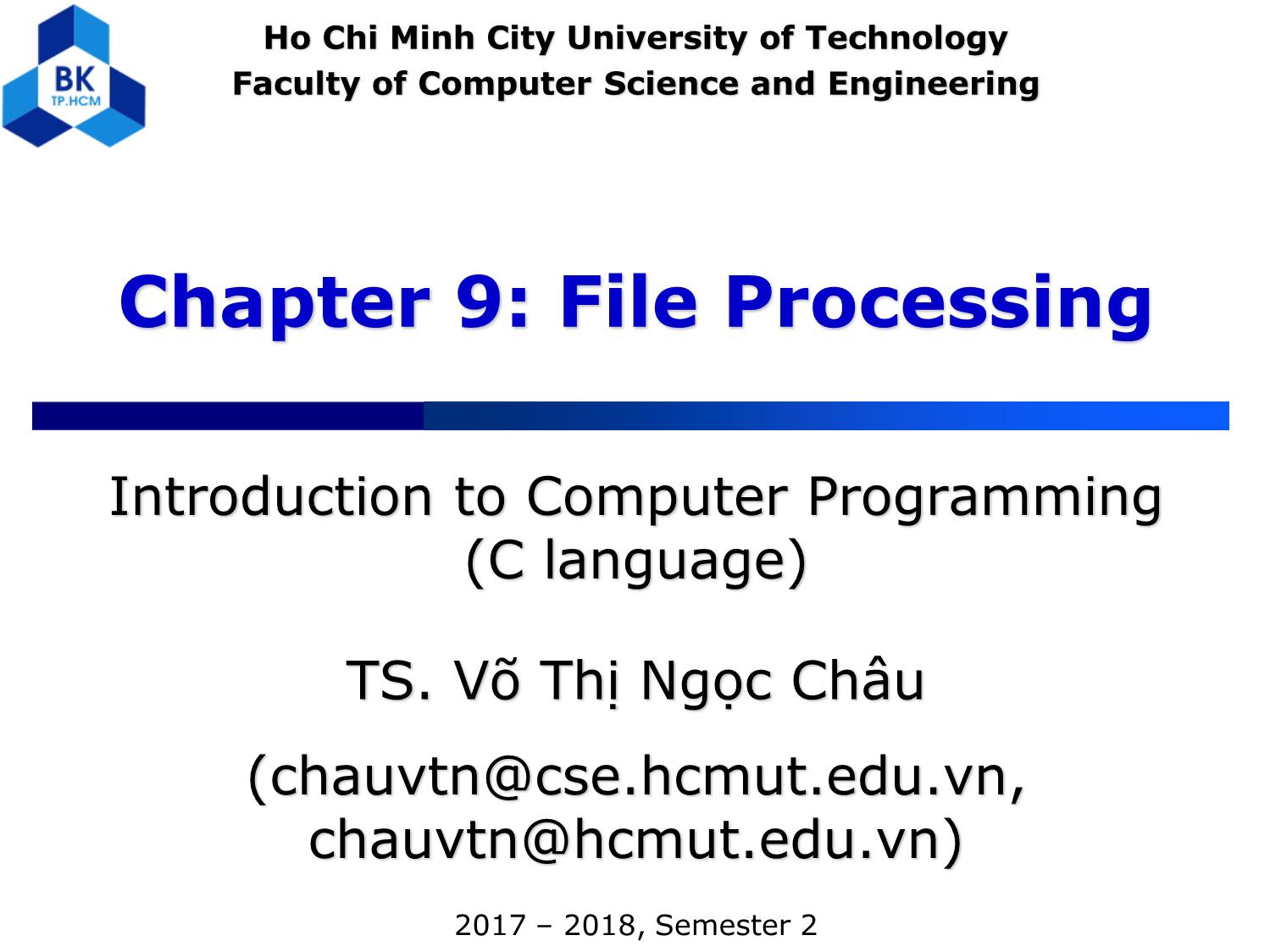
Trang 1
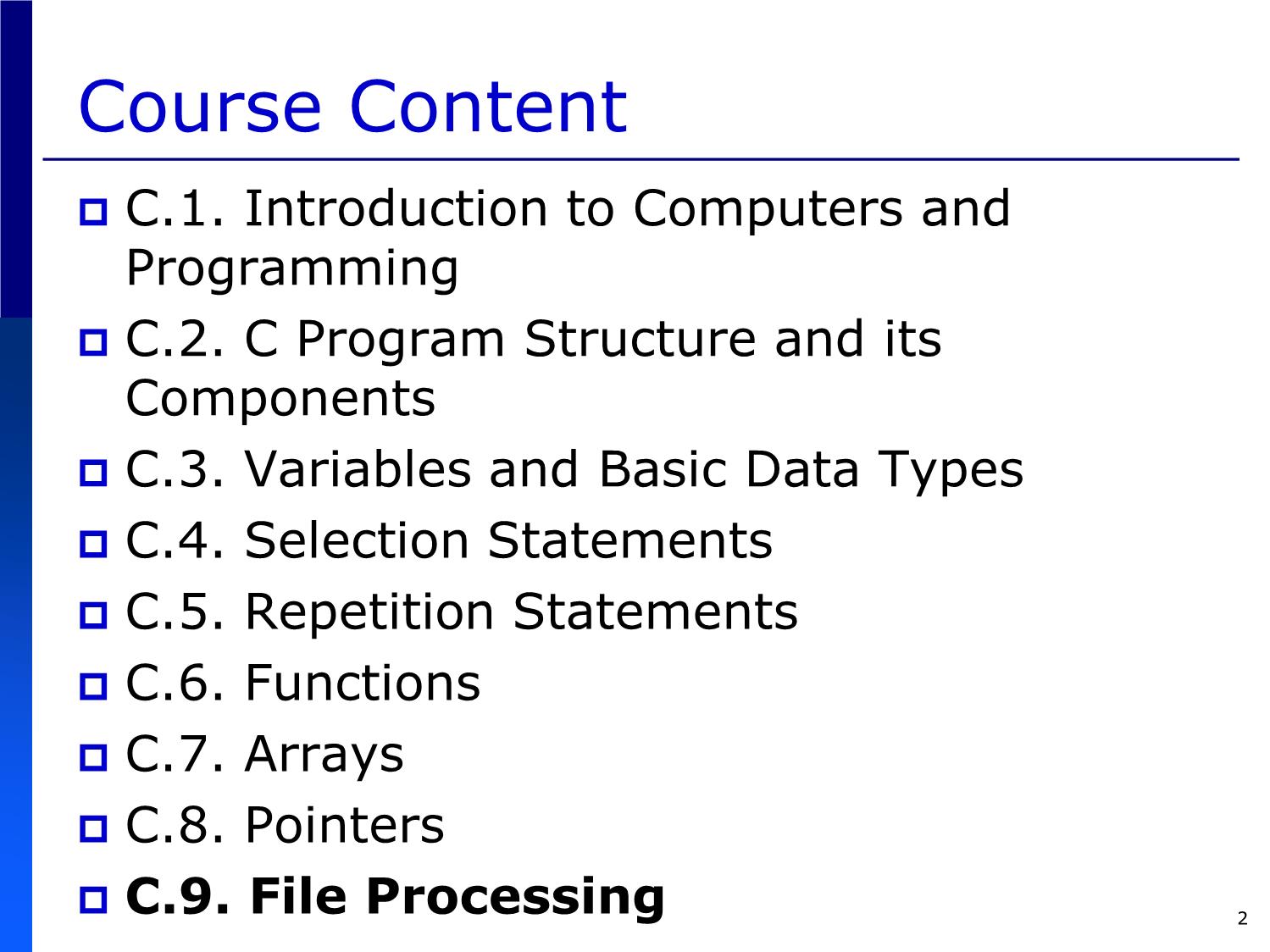
Trang 2
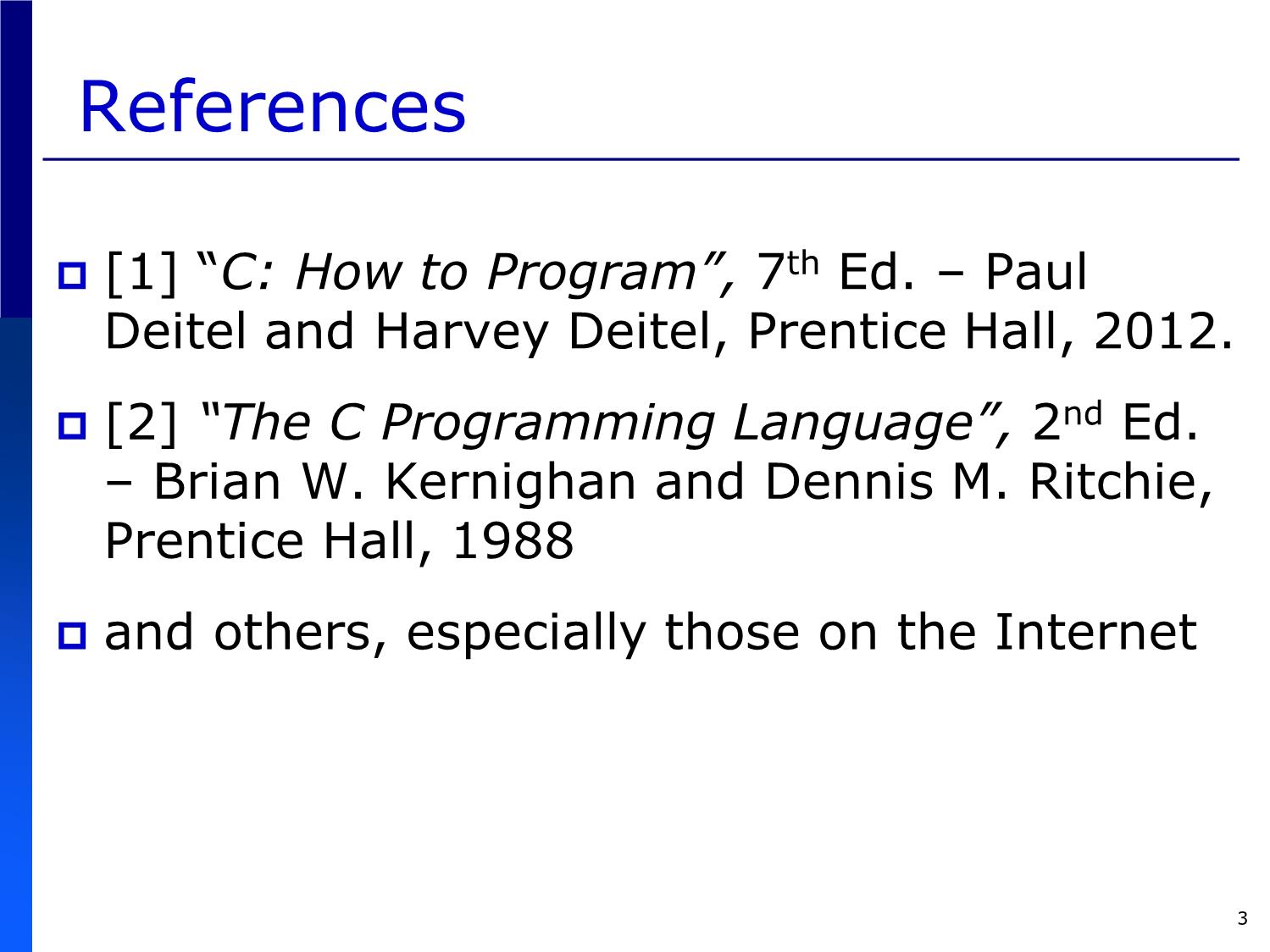
Trang 3
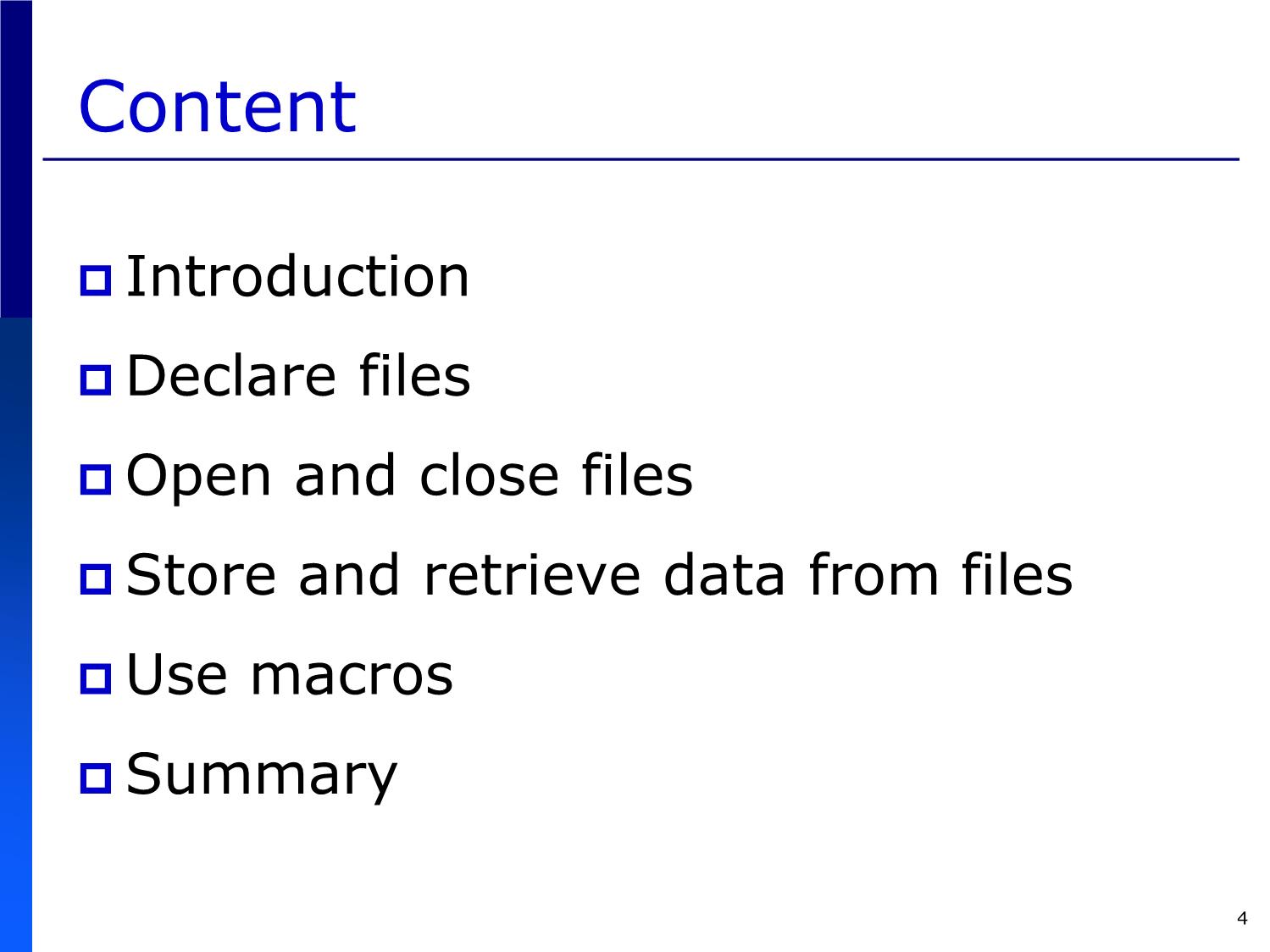
Trang 4
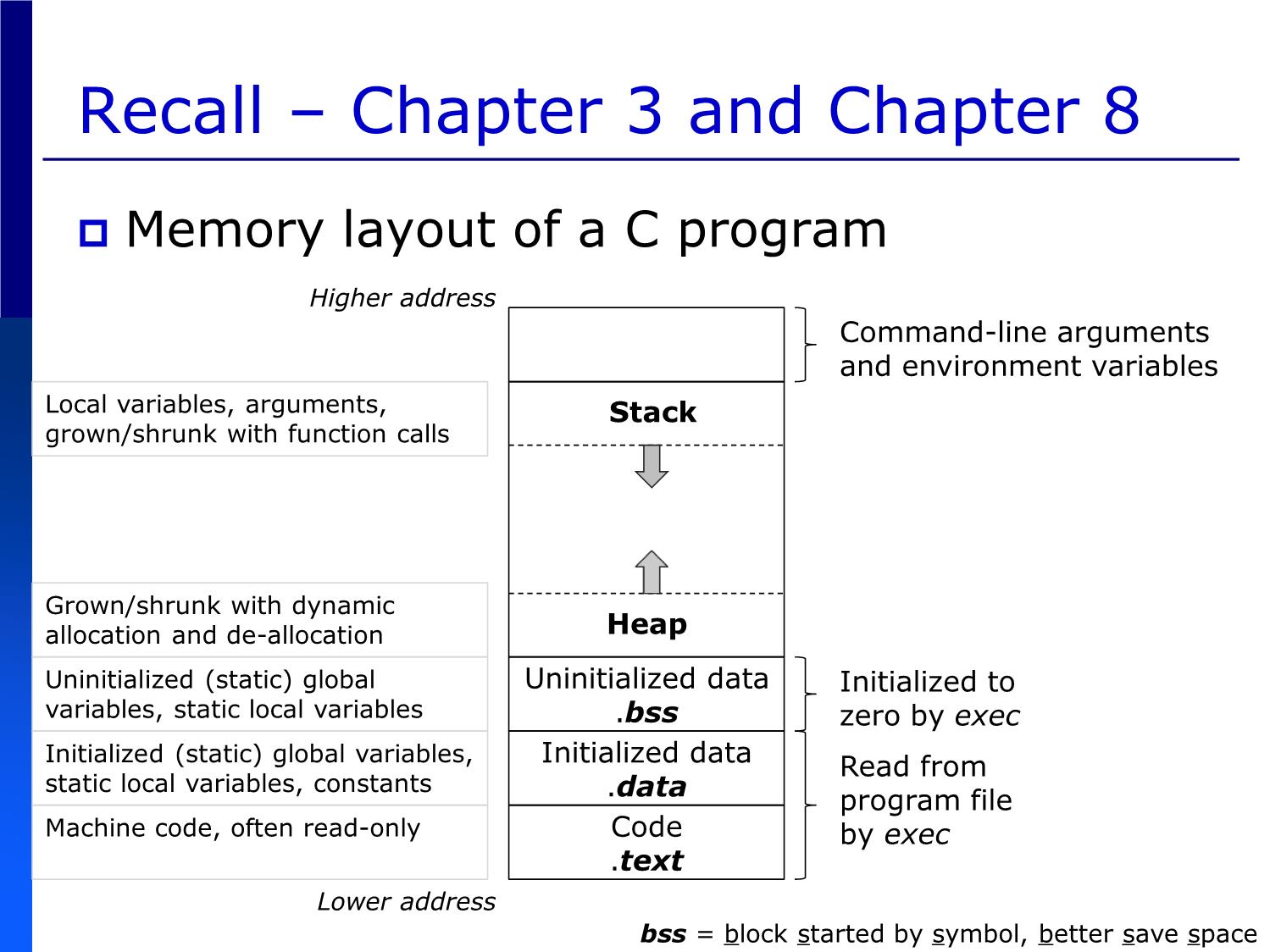
Trang 5
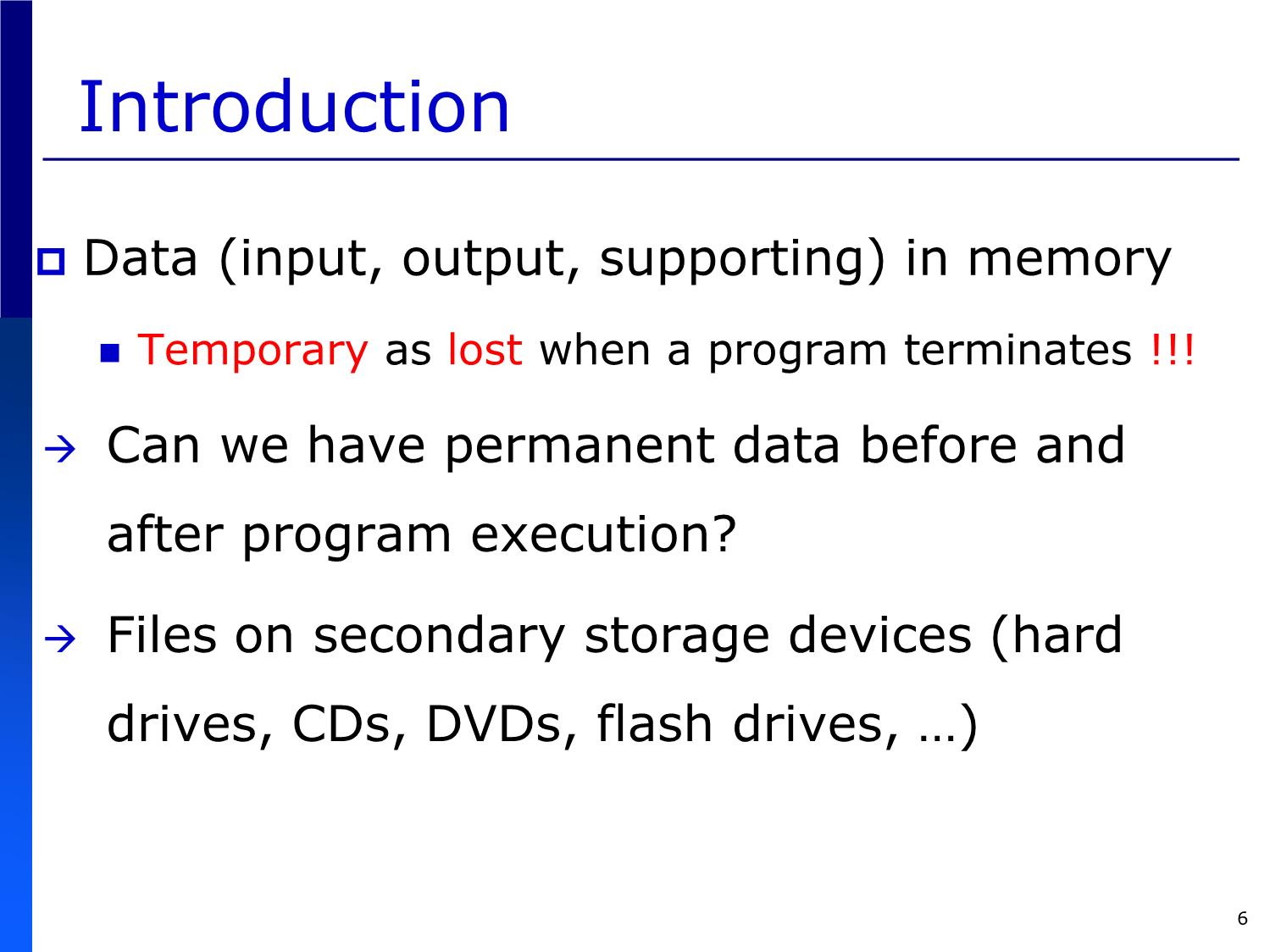
Trang 6
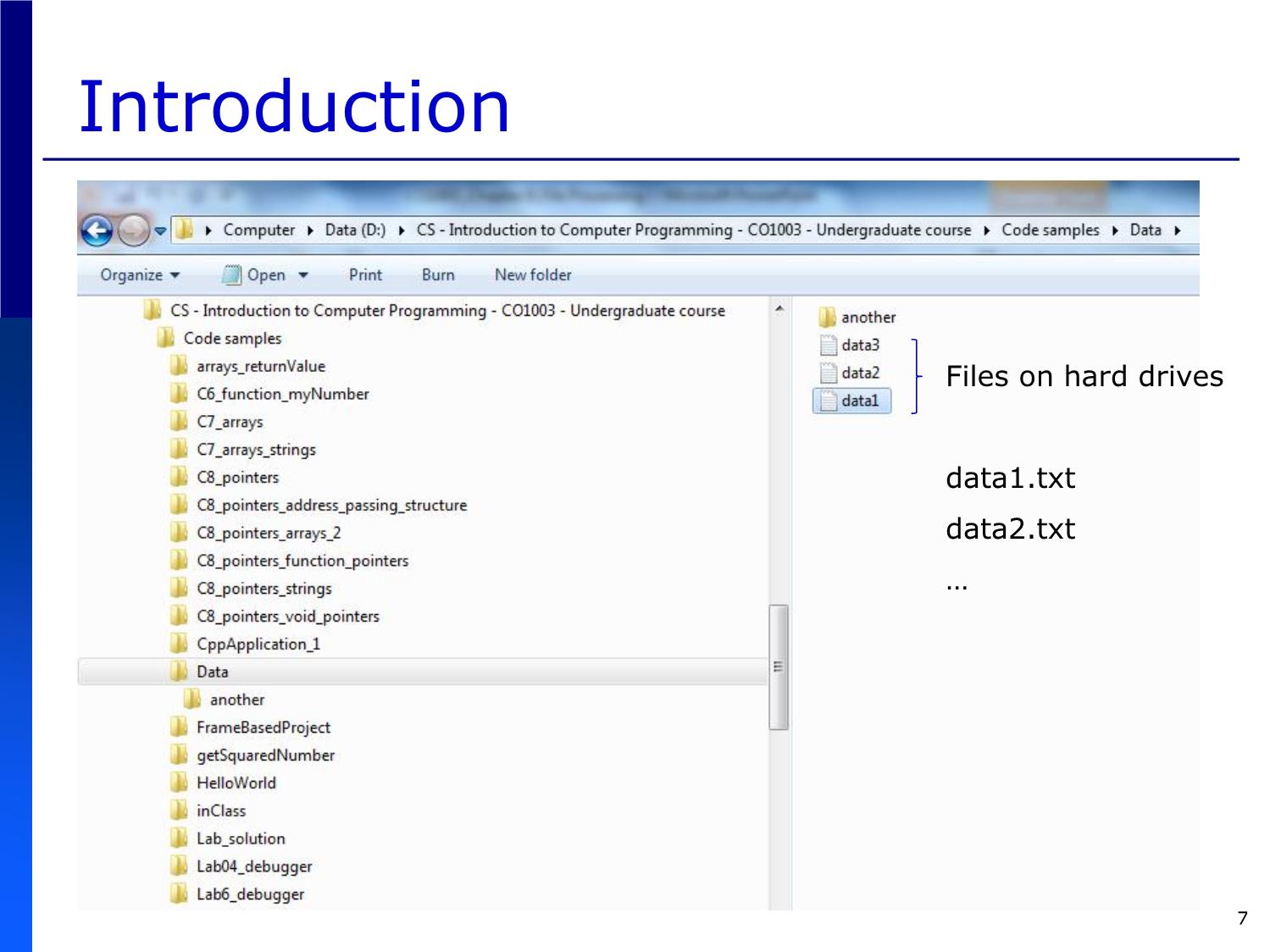
Trang 7
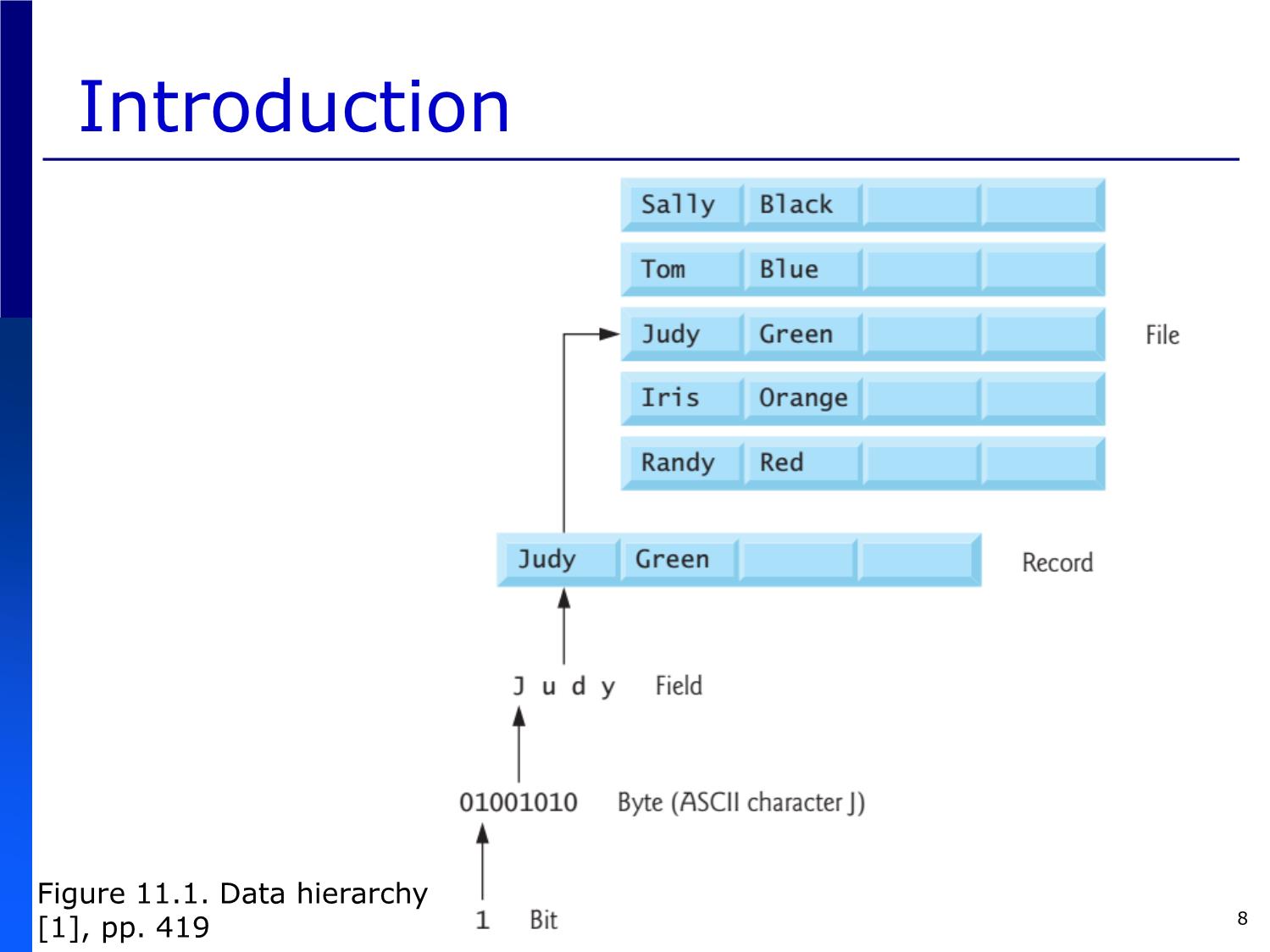
Trang 8
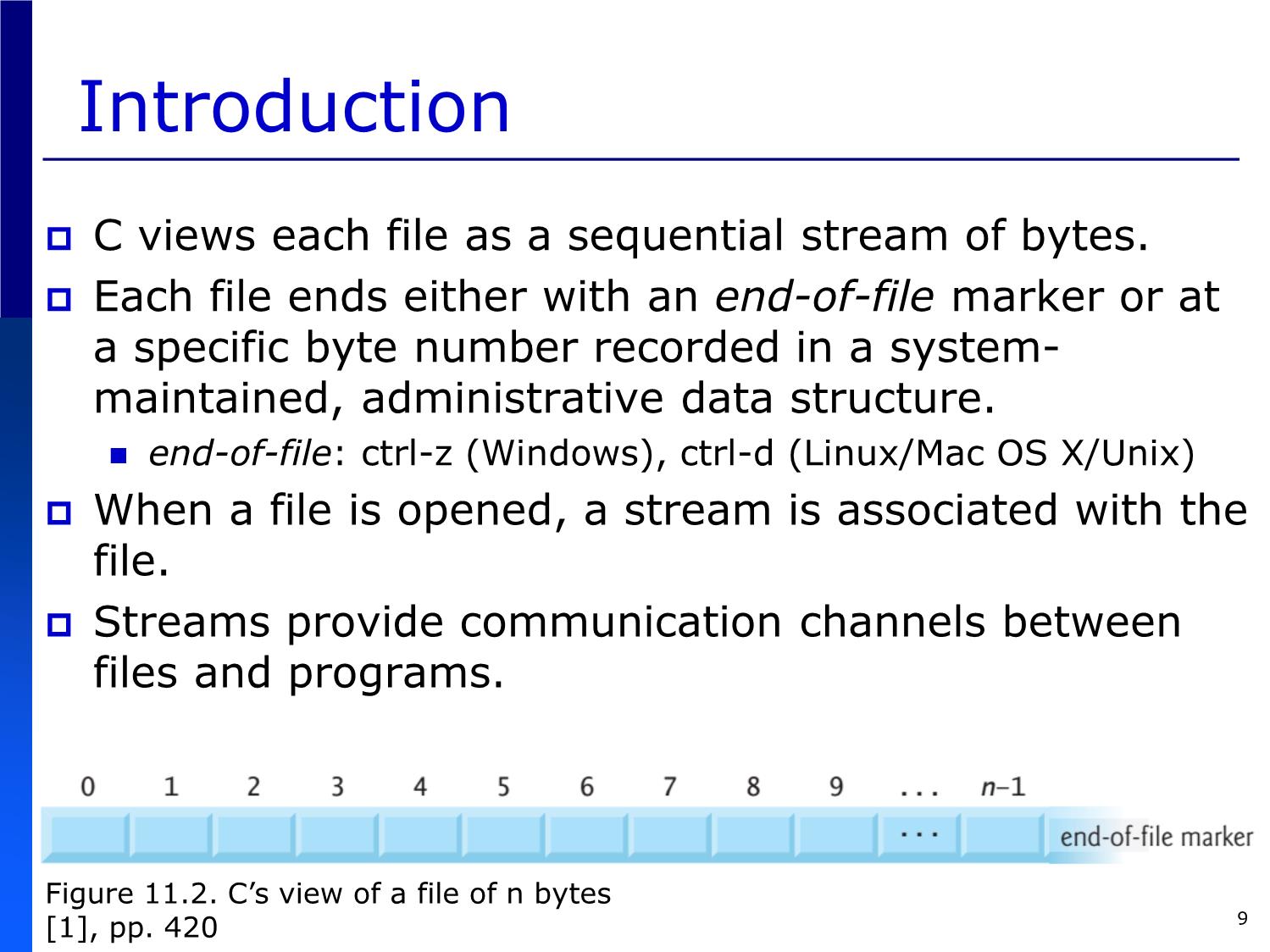
Trang 9
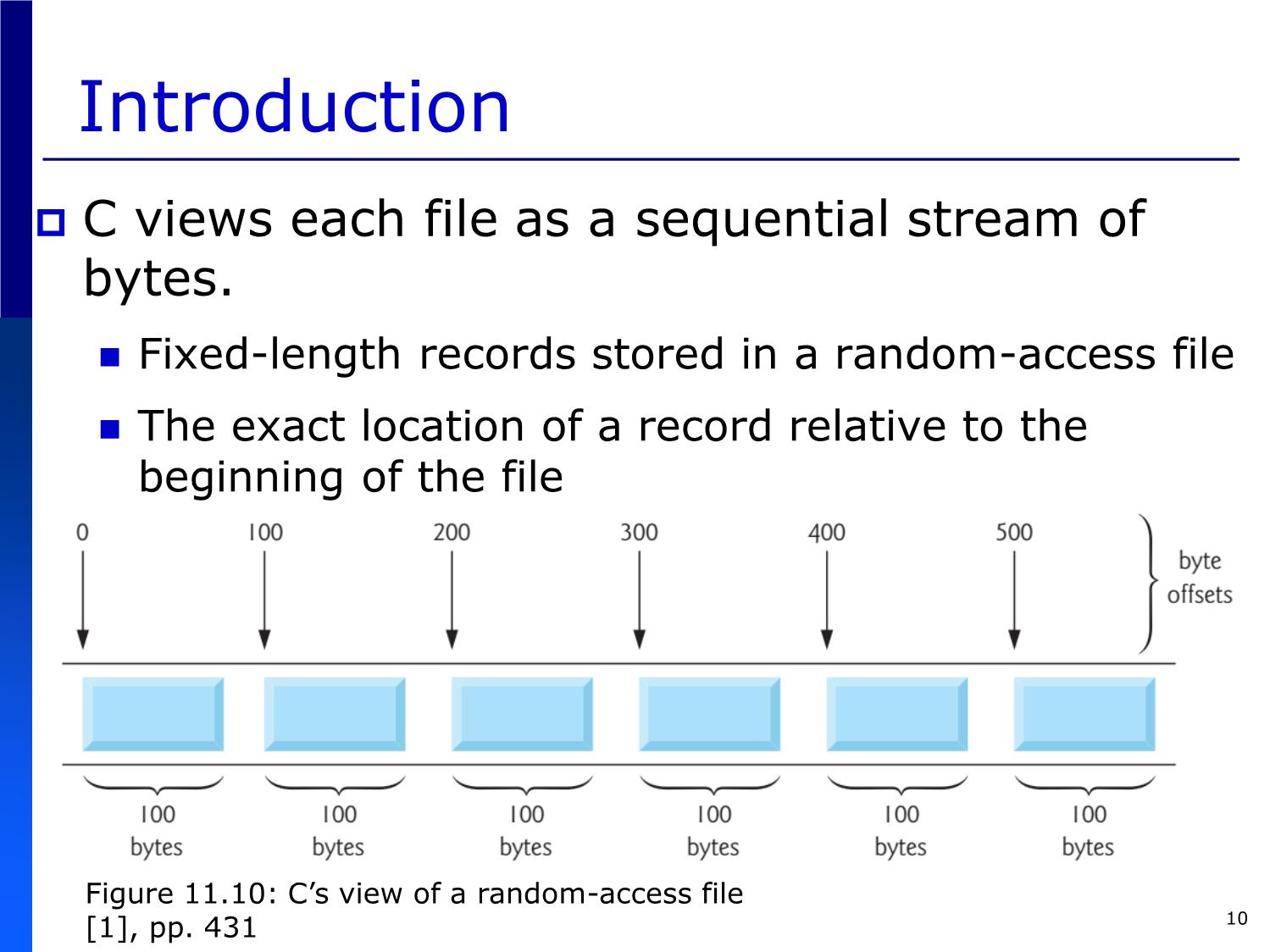
Trang 10
Tải về để xem bản đầy đủ
Bạn đang xem 10 trang mẫu của tài liệu "Bài giảng Introduction to Computer Programming (C language) - Chapter 9: File Processing - Võ Thị Ngọc Châu", để tải tài liệu gốc về máy hãy click vào nút Download ở trên
Tóm tắt nội dung tài liệu: Bài giảng Introduction to Computer Programming (C language) - Chapter 9: File Processing - Võ Thị Ngọc Châu
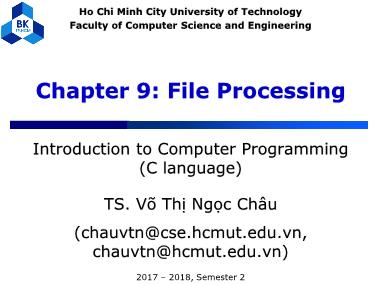
Ho Chi Minh City University of Technology
Faculty of Computer Science and Engineering
Chapter 9: File Processing
Introduction to Computer Programming
(C language)
TS. Võ Thị Ngọc Châu
(chauvtn@cse.hcmut.edu.vn,
chauvtn@hcmut.edu.vn)
2017 – 2018, Semester 2
Course Content
C.1. Introduction to Computers and
Programming
C.2. C Program Structure and its
Components
C.3. Variables and Basic Data Types
C.4. Selection Statements
C.5. Repetition Statements
C.6. Functions
C.7. Arrays
C.8. Pointers
C.9. File Processing 2
References
[1] “C: How to Program”, 7th Ed. – Paul
Deitel and Harvey Deitel, Prentice Hall, 2012.
[2] “The C Programming Language”, 2nd Ed.
– Brian W. Kernighan and Dennis M. Ritchie,
Prentice Hall, 1988
and others, especially those on the Internet
3
Content
Introduction
Declare files
Open and close files
Store and retrieve data from files
Use macros
Summary
4
Recall – Chapter 3 and Chapter 8
Memory layout of a C program
Higher address
Command-line arguments
and environment variables
Local variables, arguments, Stack
grown/shrunk with function calls
Grown/shrunk with dynamic
allocation and de-allocation Heap
Uninitialized (static) global Uninitialized data Initialized to
variables, static local variables .bss zero by exec
Initialized (static) global variables, Initialized data Read from
static local variables, constants
.data program file
Machine code, often read-only Code by exec
.text
Lower address
bss = block started by symbol, better save space
Introduction
Data (input, output, supporting) in memory
Temporary as lost when a program terminates !!!
Can we have permanent data before and
after program execution?
Files on secondary storage devices (hard
drives, CDs, DVDs, flash drives, )
6
Introduction
Files on hard drives
data1.txt
data2.txt
7
Introduction
Figure 11.1. Data hierarchy
[1], pp. 419 8
Introduction
C views each file as a sequential stream of bytes.
Each file ends either with an end-of-file marker or at
a specific byte number recorded in a system-
maintained, administrative data structure.
end-of-file: ctrl-z (Windows), ctrl-d (Linux/Mac OS X/Unix)
When a file is opened, a stream is associated with the
file.
Streams provide communication channels between
files and programs.
Figure 11.2. C’s view of a file of n bytes
[1], pp. 420 9
Introduction
C views each file as a sequential stream of
bytes.
Fixed-length records stored in a random-access file
The exact location of a record relative to the
beginning of the file
Figure 11.10: C’s view of a random-access file
[1], pp. 431 10
Introduction
Operations on files
Create
Open
Read
Write (write a new file, append an existing file)
Close
Access to files in C for processing
Sequential access to a sequential stream of bytes
Random access to a stream of fixed-size records
11
Introduction
The standard library:
FILE *fopen(const char *filename, const char *mode)
FILE *freopen(const char *filename, const char *mode,
FILE *stream)
int fclose(FILE *stream)
size_t fread(void *ptr, size_t size, size_t nmemb, FILE
*stream)
int fgetc(FILE *stream)
char *fgets(char *str, int n, FILE *stream)
int fscanf(FILE *stream, const char *format, ...)
size_t fwrite(const void *ptr, size_t size, size_t nmemb,
FILE *stream)
int fputc(int char, FILE *stream)
int fputs(const char *str, FILE *stream)
12
int fprintf(FILE *stream, const char *format, ...)
Declare files
Each file communicated with C program via a
stream controlled by a pointer of FILE
identifier: a valid identifier for a pointer
FILE* identifier; pointing to a file stream
FILE: an object type suitable for storing
FILE* pFile1; information for a file stream, defined in
the standard library
FILE* pFile2 = 0;
FILE*: a pointer type of FILE type
FILE* pFile3 = NULL;
A file pointer will be associated with a file
stream once a file is opened.
13
Open and close files
Open files
FILE *fopen(const char *filename, const char
*mode)
Opens the file pointed to by filename using the given
opening mode.
pFile1 = fopen("Data.txt", "r");
Close files
int fclose(FILE *stream)
Closes the stream. All buffers are flushed.
fclose(pFile1);
14
Open and close files
Open files
Filename = "Data.txt"
Located in the current directory
Filename = ".\\Data\\Data.txt"
Located in the sub-directory of the current directory
Filename = "..\\Data.txt"
Located in the super-directory of the current directory
Filename = "D:\\CS - Introduction to Computer
Programming - CO1003 - Undergraduate
course\\Code samples\\Data\\Data.txt"
Located in the specified directory with the absolute path
15
Open and close files
File opening modes
16
Store and retrieve data from files
Store data into files (write)
A sequence of bytes from memory to the file
The file plays a role of stdout.
Retrieve data from files (read)
A sequence of bytes from the files to memory
The file plays a role of stdin.
What bytes? Read (file -> memory) Write (memory -> file)
A char fgetc fputc
A line of bytes fgets fputs
Formatted bytes fscanf fprintf
Bytes in the fread fwrite
binary mode 17
Store and retrieve data from files
18
Store and retrieve data from files
19
Store and retrieve data from files
What bytes? Read (file -> memory) Write (memory -> file)
A char fgetc fputc
char aChar; aChar = fgetc(pFile1); fputc('a', pFile1);
A line of bytes fgets fputs
char aStr[50]; fgets(aStr, 50, pFile1); fputs("Today?", pFile1);
Formatted bytes fscanf fprintf
int anInt; fscanf(pFile1, "%d %c fprintf(pFile1, "%d %d
char aChar; %f", &anInt, &aChar, %c %f", 10, anInt, aChar,
float aFloat; &aFloat); aFloat);
Bytes in the fread fwrite
binary mode
char buffer[50]; fread(buffer, fwrite(buffer,
sizeof(int)+sizeof(char)+si strlen(buffer)+1, 1,
zeof(float)+1, 5, pFile1); pFile1);
20
Process the grades of each student
Put them all togetherin a file for their averaged grades.
21
Process the grades of each student
in a file for their averaged grades.
Put them all togetherWrite the resulting averaged grades
into another file.
22
Input data file
Put them all together
Output data file in the binary mode
Output data file
in the formatted
mode
23
Output data file in the binary mode
Output data file in
the formatted mode
24
Use macros
Macro
An identifier in #define preprocessor directive
#define identifier replacement-text
identifier: a valid identifier scoped from its definition to the
end of the file or to the #undef directive
replacement-text: text on the line or longer text on many
lines with a backslash (\)
Considered as operations defined as symbols
With no argument processed like a symbolic constant
With arguments processed like an inline function
. Arguments are substituted in the replacement text
. The replacement text then replaces the identifier and
argument list in the program 25
Use macros
#define identifier replacement-text
User-defined macros
Parentheses need using for
correct value determination.
26
Use macros
#define identifier replacement-text
#define CIRCUMFERENCE(radius) (2*PI*(radius))
r=1.5
CIRCUMFERENCE(r+1) = (2*PI*(r+1)) = 15.71
VS.
#define CIRCUMFERENCE(radius) (2*PI*radius)
r=1.5
CIRCUMFERENCE(r+1) = (2*PI*r+1) = 10.42 X
27
Use macros
#define identifier replacement-text
#define DIAMETER(radius) ((radius) + (radius))
CIRCUMFERENCE = PI*DIAMETER(r+1) r=1.5
= PI*((r+1)+(r+1)) = 15.71
VS.
#define DIAMETER(radius) (radius) + (radius)
CIRCUMFERENCE = PI*DIAMETER(r+1) r=1.5
= PI*(r+1)+(r+1) = 10.35 X
28
Use macros
Conditional compilation up to macro definition
control the execution of preprocessor directives
and the compilation of program code
#ifdef identifier //if identifier is defined, consider the following code
#endif
#ifdef identifier //if identifier is defined, consider the following code
#else //else consider the following code
#endif
#ifdef identifier //if identifier is defined, consider the following code
#elif constant-expression
#endif
#ifndef identifier //if identifier is not defined, consider the following code
#endif
#undef identifier //remove the definition of identifier 29
Use macros – Conditional compilation
Recall – Chapter 6 – Functions
Header file: mynumber.h
30
Use macros
Many macros predefined in the standard
library files
FLT_MIN: the minimum finite floating-point value
FLT_MAX: the maximum finite floating-point value
INT_MIN: the minimum value for an int with 2 bytes
INT_MAX: the maximum value for an int with 2 bytes
LC_ALL: sets everything with the location specific settings
LC_CTYPE: affects all the character functions with settings
31
Use macros
Many macros predefined in the standard
library files
The stdarg.h header defines a variable type va_list and
three following macros which can be used to get the
arguments in a function when the number of arguments
are not known i.e. variable number of arguments.
. void va_start(va_list ap, last_arg)
. type va_arg(va_list ap, type)
. void va_end(va_list ap)
A function of variable arguments is defined with the
ellipsis (,...) at the end of the parameter list.
32
Use macros -
va_list
A type whose variable ap is used for holding information
about the arguments
void va_start(va_list ap, last_arg)
The macro initializes ap variable to be used with the va_arg
and va_end macros. The last_arg is the last known fixed
argument being passed to the function i.e. the argument
before the ellipsis.
type va_arg(va_list ap, type)
The macro retrieves the next argument in the parameter list
of the function with type type.
void va_end(va_list ap)
The macro allows a function with variable arguments which
used the va_start macro to return. If va_end is not called
before returning from the function, the result is undefined.
33
Use macros -
Define the function isSubstring to check if a substring is contained
by a list of given strings.
34
Use macros -
Variable ap is required to have an
access to each argument in the
argument list after this point.
This macro is required to start
the access to the argument list.
This macro is required to have an
access to an actual argument of
type char* in the argument list.
This macro is required to end the
access to the argument list before
the return of the function. 35
Summary
File processing in C
Allows data permanency
Performs with the standard functions in the
library
Open/Close
Read/Write/Append
Supports two access schemes
Sequential access
Random access
36
Summary
Macros in the #define preprocessor directive
User-defined macros vs. Macros in the libraries
Conditional compilation based on macro
definitions
Examples with macros in the for
functions with the variable numbers of arguments
37
Chapter 9: File Processing
38 File đính kèm:
 bai_giang_introduction_to_computer_programming_c_language_ch.pdf
bai_giang_introduction_to_computer_programming_c_language_ch.pdf

